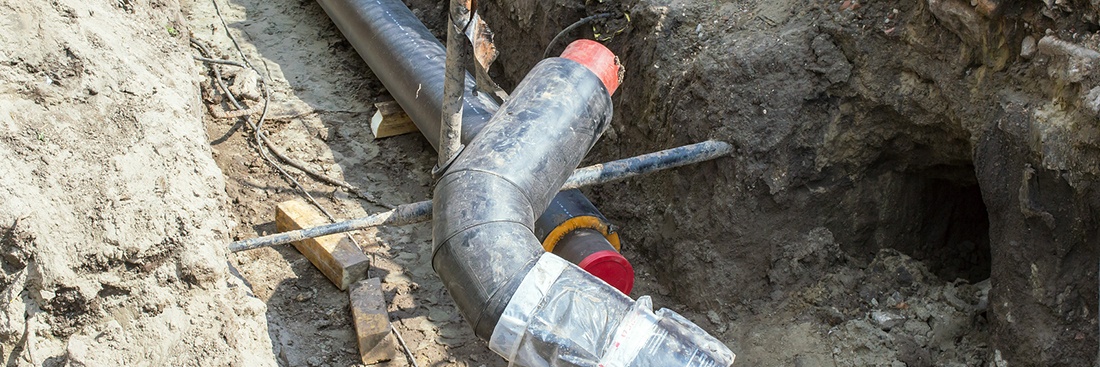
Replacing underground pipes is extremely labor intensive, expensive, and disruptive. New epoxy technology allows for pipe restoration without the hassle of digging a trench.
Pipelining
Pipelining is a broad term for repairing any kind of water distribution or sewer pipe with a “pipe within a pipe”. There are two common ways to achieve this:
- For residential and commercial water pipe repair, an epoxy pipe lining compound is inserted. The compound adheres to the inside of the copper, galvanized steel or plastic pipe. Once dry, the epoxy forms a thin lining on the inner wall of the pipe. The kind of epoxy used depends on the type of pipe being repaired.
- To repair a sewer line pipe, a non-rigid pipeliner is pushed or pulled through the section of damaged pipe. Using special equipment, the pipeliner is then forced to adhere to the existing pipe to seal holes or fractures.
Trenchless Pipe Lining
When a damaged sewer or drain pipe is deep or beneath paved or landscaped surfaces, trenchless sewer repair is often the best solution.
Trenchless sewer repair avoids the major disruption and extensive heavy labor of pipe replacement. Instead of digging a trench to expose the entire damaged pipe so it can be removed and replaced, only one or two small access points are needed. From there, pipe liners are inserted and affixed.
The same kind of trenchless method can be used to insert a drain liner.
If the original pipes are made of clay or concrete, trenchless repair might not be appropriate. A plumber with expertise in outdoor water and sewer systems can advise on alternative solutions.
The type of pipeline lining material used in trenchless repair depends on the original pipe material. There are PVC pipe lining systems and pipe lining systems for metal.
In either case, the plumbing liner is designed to form a physical and chemical bond with the original pipe.
Benefits of Trenchless Pipeline Repair
The most obvious and attractive benefits of trenchless repair are minimal disruption and destruction. In most places, sewer and outdoor portions of water distribution systems are buried under gardens, lawns, sidewalks, and streets. Trenchless repair prevents the destruction of gardens and tree roots. It minimizes the need to close sidewalks and streets, making it the method of choice for municipalities.
These are important benefits because they reduce the stress and cost of rehabilitation. Still, there are other advantages to repairing with pipe lining and coating, instead of replacement:
- Durability. Repairing with pipe liner extends the life of water and sewer systems by decades.
- State-of-the-art. As water and sewer systems age and the cost of repair and rehabilitation increases, pipelining technologies continue to improve.
- Pipe lining supply. The supply of materials is good, preventing lag in starting repairs.
Finding the Right Professional
Not all plumbers are equipped for outdoor pipe liner repair projects. As plumbing and water system rehabilitation experts, CuraFlo plumbers have:
- Experience performing pipe lining repair
- Reliable access to pipe relining supplies
- Pipe lining equipment suitable for the scale of your project
- Expertise in the pros and cons of different pipe liner materials
How Much Does Pipe Relining Cost?
The cost of pipe relining depends on:
- Type of pipe
- Extent of damage
- For outdoor repair, the location and depth of damaged pipes
- For indoor repair, the plumbing layout and design
Using epoxy pipe lining instead of replacement for indoor repairs, significantly reduces the cost of ripping out and replacing walls and ceilings.
Inserting sewer or water pipe lining for outdoor repairs also reduces the cost of tearing up and rehabilitating gardens, lawns streets, and sidewalks.
Established pipe lining companies, like CuraFlo, can provide a quote specific to your situation and answer questions to help you make an informed decision.
